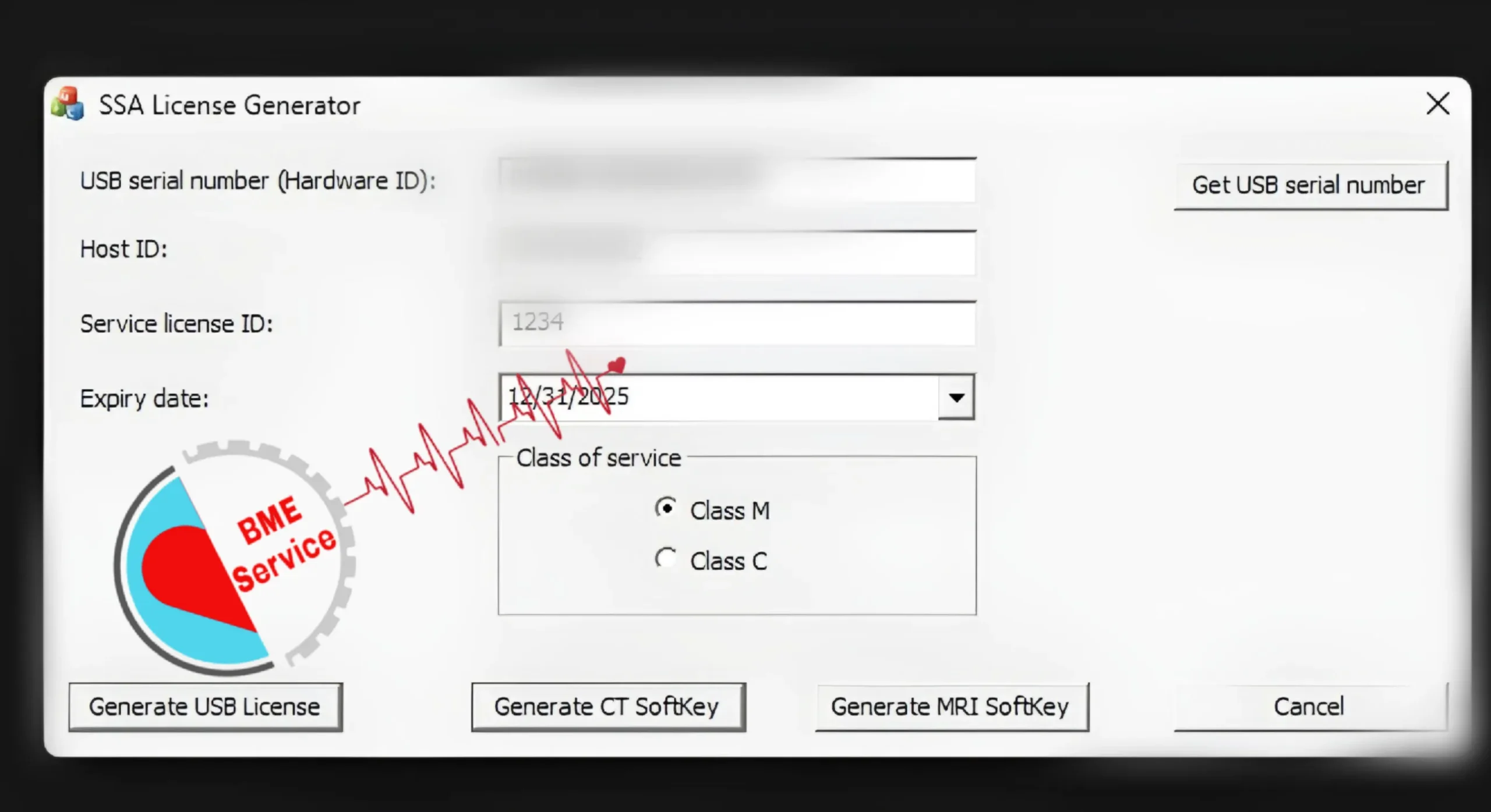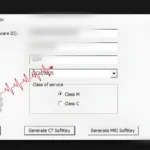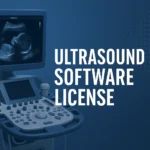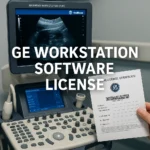Provider of Authorized SSA License Generator & SSA Service Key Solutions (Engineers-Only)
Seeking dependable, OEM-approved resources to support your medical systems? We provide:
• Efficient SSA License Generator for authorized service/biomedical engineers.
• SSA service key generation aligned with OEM entitlement for supported platforms.
• Support for multiple system families and licensing models, including node-locked and floating configurations.
Our offerings are tailored to the needs of clinical engineering teams—ensuring compliant activation, reduced downtime, and fully optimized device performance.
📩 For additional details, connect with us via WhatsApp: +967 775455559
Allow us to help you unlock the full potential of your medical equipment—safely and efficiently. 🌟
Introduction
When a service window is closing and an MRI suite is waiting, the pressure to activate critical options fast—and correctly—is real. That’s why engineers searching to buy SSA license generator need more than a product: they need an OEM-authorized, entitlement-verified pathway that protects uptime, compliance, and patient-care continuity. This guide cuts through uncertainty with clear answers on eligibility, pricing, dongle types, activation workflow, and secure IT requirements. Whether you’re a biomedical engineer, hospital IT lead, or procurement manager, this is the roadmap that turns decision into activation—without risk, delays, or guesswork.

Who Can Buy — ssa license generator
Buying an SSA license generator is not like buying regular software online. Access is restricted, controlled, and tightly linked to regulatory and cybersecurity requirements. OEMs design this tool for qualified service/biomedical engineers, not end users or the general public. Understanding who is allowed to buy, through which channels, and under what entitlement conditions is the first step to a smooth, compliant activation with no surprises later.
Engineers-Only Eligibility
The SSA license generator is intentionally limited to qualified service or biomedical engineers who are responsible for maintaining and configuring medical systems. These individuals typically work for hospitals, authorized distributors, or certified service partners and operate under formal service contracts. They understand how license changes affect clinical workflows, safety, and regulatory status—so OEMs rely on them to follow documented procedures and keep clear records.
In practice, eligibility checks may include a professional role/title, employer verification, and sometimes proof of training on the relevant platform. One hospital simplified this by issuing a standard “engineer of record” letter for each modality, signed by department leadership. When an RFQ or support ticket referenced that engineer, the OEM could immediately confirm eligibility—cutting identity checks from days to hours.
OEM Compliance & Authorized Channels
To buy SSA license generator in a compliant way, the purchase must go through OEM-authorized channels—either directly via the OEM portal or through an authorized distributor. This ensures that every generator instance and every license it produces is mapped to a legitimate customer, site, and contract. It also protects the manufacturer’s intellectual property and keeps support and warranty pathways open.
Sites that attempt informal routes—such as generic software brokers or unverified third parties—often run into roadblocks: activation refusals, missing documentation, or loss of support coverage. By contrast, one imaging network that standardized on OEM/distributor channels saw their average “quote-to-activation” time drop significantly. The OEM could see entitlement, prior tickets, and installed base history in a single view, which made approvals and escalations much faster and safer.
Entitlement Verification & Documentation
Even if the buyer is a qualified engineer, the OEM still needs to verify entitlement—the formal record that your organization owns the right to generate or update licenses for specific systems. This usually includes a contract or entitlement ID, site legal name, system serials, and a clear link between the site and the requesting engineer. Without this, the OEM cannot legally or safely issue SSA licenses.
A real-world example: a biomedical team submitted a request to update options using the SSA license generator but forgot to include the current entitlement number and an up-to-date system report. The OEM paused the case and asked for proof; the missing documents took three days to gather, delaying the window they had reserved for maintenance. After that, the team built a simple “entitlement packet” template—contract ID, serials, site letter, engineer contact—which they now attach to every request, cutting validation to a matter of hours.
Supported Platforms, Dongle Types & Usage Models
Understanding which systems the SSA license generator supports—and how it delivers licenses—is essential for planning upgrades, expansions, and compliant service operations. This section breaks down the common platform families, the difference between dongle-based and software-based licensing, and the usage models (node-locked vs floating) that determine how licenses behave in real clinical workflows. Clear knowledge here helps reduce downtime and ensures compatibility before opening any OEM ticket.
Supported Platforms & System Families
The SSA license generator typically supports a defined range of medical systems depending on OEM policy—often specific imaging platforms or clinical software modules that rely on structured entitlement. Each platform requires its own version alignment, which ensures that licenses generated reflect the correct hardware, OS build, and option set. This tight coupling prevents misconfiguration and protects the system’s regulatory classification.
For example, an engineering team once attempted activation on a workstation that had been upgraded unofficially to a newer OS build. The OEM rejected the activation because the environment didn’t match the validated platform version. After rolling back to the supported configuration, the SSA license generator worked correctly on the first attempt—highlighting why version compatibility is non-negotiable.
Dongle Types (Service Key vs Software-Based Licensing)
Some deployments rely on a service dongle, a hardware-based device that stores licensed options securely. These dongles are tied to OEM-defined identifiers and often used during field service operations where portability and secure offline ownership matter. Because the dongle physically carries the license, engineers must maintain custody logs, protect it from damage, and track version alignment with the associated systems.
Other deployments use software-based licensing, which binds the license to the host machine via a digital fingerprint or a secure license manager. This is convenient for fixed workstations or controlled server rooms, reducing the risk of physical loss and simplifying audits. A site that transitioned from dongles to software-based activation reported fewer service delays because engineers no longer had to wait for a traveling dongle or track who last used it.
Node-Locked Model (Single Workstation Binding)
A node-locked SSA license binds directly to one workstation or service laptop. This model works best in controlled scenarios where one engineer or one machine is responsible for ongoing maintenance. Node-locked licensing avoids concurrency issues and operates reliably even in offline environments—ideal for facilities with strict network separation or security requirements.
However, node-locked licenses also require proper planning. When a workstation is replaced or upgraded, the entitlement must be updated, and the license must be regenerated through the OEM. One clinical site lost nearly a full shift when a retiring engineer returned a laptop without transferring the license. After implementing a hardware-retirement checklist, they avoided similar disruptions in the future.
Floating/Concurrent Model (License Server Deployment)
Floating licenses run on a license server, allowing multiple engineers or workstations to check out seats concurrently. This is ideal for multi-site networks, teaching hospitals, or engineering departments with rotating responsibilities. A floating model increases utilization because seats are consumed only while in use, then returned to the pool—creating a more cost-efficient setup for larger teams.
A real-world example: a regional imaging network deployed a five-seat floating license for nine engineers across three hospitals. With proper monitoring, static IP setup, and lease-time balancing, their license-utilization report showed over 85% efficiency without ever hitting a concurrency block. This made service scheduling smoother and reduced the need for additional seats, ultimately lowering operational costs.
SSA License Models & Dongle Types – Quick Compatibility Matrix
| Aspect | Node-Locked License | Floating / Concurrent License | Dongle-Based (Service Key) | Software-Based Licensing |
|---|---|---|---|---|
| Primary Use Case | Single engineer / single workstation | Multi-engineer / multi-site teams | Portable service access in the field | Fixed workstations / server environments |
| Binding Method | Tied to one machine fingerprint | Managed by a central license server | Tied to physical USB/service dongle | Bound to host ID or license manager |
| Best For | Small sites, isolated networks, offline use | Networks, teaching hospitals, rotating engineers | Field service, temporary access, offline scenarios | Stable IT setups with clear change control |
| Key Advantages | Simple audits, no concurrency complexity | High utilization, flexible seat sharing | Physical proof of license, easy to carry | No physical loss risk, easier backup/redeployment |
| Main Risks / Trade-Offs | Hardware change requires re-activation | Requires stable server, network, and monitoring | Loss/damage risk, custody tracking required | Misconfigured host can block activation |
| IT / Network Requirements | Minimal (local only) | Static IP, DNS/NTP, firewall ports, monitoring | Minimal; mostly physical handling policies | OS support, AV/EDR exclusions, secure endpoints |
| Typical SSA Use Scenario | One service laptop per site | Shared engineering team across multiple hospitals | OEM/field engineer visiting multiple installations | Centralized engineering or service workstation |

Pricing, Quotes & Total Cost of Ownership (TCO)
Understanding the pricing structure for the SSA license generator is essential for engineering teams and procurement departments planning maintenance, upgrades, or license expansions. Costs vary based on edition, usage model, entitlement status, and support level. This section explains how pricing is determined, how to request an accurate OEM-authorized quote, and how to evaluate the true total cost of ownership (TCO)—including the hidden operational costs many teams overlook.
Pricing Factors (Edition, Usage Model & SLA)
When planning to buy SSA license generator, the first cost variable is always the edition or feature level required for your service environment. Basic editions cover core licensing functions, while advanced editions include additional service options or expanded entitlement support. Each edition aligns with an OEM-defined entitlement category, preventing accidental over- or under-licensing.
The second major variable is the usage model—node-locked licenses typically cost less upfront, while floating/concurrent licenses are priced higher due to their multi-user flexibility. Additionally, the service-level agreement (SLA) influences cost: a 24/7 support SLA or priority escalation coverage will naturally increase pricing. One multi-site hospital realized a 20% savings simply by choosing a weekday-only SLA instead of a 24-hour hybrid SLA they weren’t actively using.
Quote Mechanics (RFQ Requirements & Entitlement Checks)
OEMs require detailed information before issuing a quote, ensuring the license aligns with system entitlement and regulatory requirements. A complete RFQ typically includes site legal name, system serials, entitlement/contract ID, the engineer of record, and your intended license model (node-locked or floating). Providing this upfront prevents back-and-forth delays and ensures the quote is compliant on the first attempt.
A biomedical engineering department once submitted an RFQ without their entitlement number, which delayed quote issuance by three full days. After adopting a standardized “RFQ packet” containing entitlement, system details, and SLA preferences, their quote turnaround time dropped consistently to under 24 hours—even during busy maintenance seasons.
TCO Considerations (Beyond the Purchase Price)
Many teams underestimate Total Cost of Ownership (TCO) when evaluating the SSA license generator. The purchase price is only part of the equation. Factors such as expected downtimes, service windows, unplanned escalations, and engineers’ time spent troubleshooting misaligned licenses all contribute to operational cost. A failed activation caused by outdated workstation OS or blocked ports can cost more in lost hours than the license itself.
One imaging network discovered that misconfigured floating-license servers were causing repeated timeouts for engineers, leading to unnecessary escalations and on-site visits. After stabilizing the server environment—updating NTP, fixing DNS entries, and adding minimal monitoring—their TCO dropped significantly. They eliminated wasteful troubleshooting cycles and achieved consistent same-day activations across all three hospitals.
Budgeting for Renewals & Future Growth
Future-proofing your SSA licensing strategy means planning for renewals, expansions, and hardware refresh cycles. Entitlement renewals typically occur annually or biannually and must be kept active to avoid activation delays. Larger organizations should also account for potential scaling—adding more engineers, new workstations, or new service sites may require additional seats or a shift from node-locked to floating licensing.
In one real example, an engineering department grew from three to ten service engineers over two years. Their original node-locked structure stopped fitting their workflow. After switching to a floating license model with proper monitoring, they achieved near 85% utilization across their team—maximizing value while controlling long-term licensing costs.
Official Activation & Entitlement Workflow
Activating the SSA license generator is a structured, compliance-driven process designed to ensure that every license issued is tied to the correct site, system, and entitlement record. Because SSA licensing directly affects regulated medical devices, OEMs enforce strict validation and documentation steps. This section breaks down the full activation workflow—from preparation to post-activation QA—so engineers can avoid delays, reduce downtime, and maintain audit-ready traceability throughout the lifecycle.
Collect Device & Site Data
The activation process begins by assembling an accurate and complete dataset. This includes the system serial number, software version, OS build, workstation ID, and site legal name. OEMs rely on this metadata to verify that the environment matches the validated configuration for SSA licensing. Missing or inaccurate data is one of the most common causes of activation delays.
A clinical engineering team once submitted an activation request with an outdated system report that didn’t reflect a recent OS upgrade. The OEM paused the ticket until updated details were provided. After this incident, the team standardized a pre-activation checklist to gather fresh system reports and console details before every request—reducing interruptions and improving first-pass success rates.
Open an OEM Support Ticket
Once documentation is ready, engineers must submit a ticket through the OEM support portal or via an authorized distributor. The ticket must clearly specify the request type (SSA license generator activation), system details, entitlement reference, and engineer contact. Portal-based requests improve traceability and route the case directly to the relevant licensing team.
A multi-site hospital migrated from email-only requests to strictly using the OEM portal. With structured fields enforcing the required information, their average response time dropped from three days to just under 36 hours. The support team could instantly correlate the request with the site’s entitlement, previous activations, and hardware configuration—dramatically speeding up the process.
Entitlement Validation & License Issuance
After the support ticket is submitted, the OEM validates entitlement—confirming that your organization holds the legal right to generate or update SSA licenses. This step protects OEM intellectual property and ensures that licenses are issued only to approved sites under active contracts. If entitlement is expired or missing, the OEM will halt the activation until proper documentation is provided.
In one case, a biomedical engineer attempted to activate a license after the site’s entitlement had quietly expired two weeks earlier. The OEM flagged the discrepancy, delaying activation until procurement renewed the contract. Once entitlement was updated, the license was issued on the same day—demonstrating how crucial it is to keep contracts current and accessible.
Remote Activation or License Delivery
Depending on the license model, the OEM may issue a license file, enable a service dongle, or perform remote activation directly on the target workstation. Node-locked licenses tie to a specific machine fingerprint, while floating licenses require a license manager configuration. Engineers must follow OEM installation steps closely to avoid mismatches that can invalidate activation attempts.
One imaging center received a floating license file but attempted installation on a workstation instead of the assigned license server. The mismatch caused repeated failures until the engineer aligned the installation with the documented server environment. Once corrected, the floating license activated instantly and worked flawlessly across multiple service laptops.
Post-Activation QA & Documentation
Activation is not complete until the environment is tested and properly documented. Engineers must verify that the SSA generator loads correctly, keys match entitlement, and the system performs as expected. For floating licenses, this includes checking server uptime, port accessibility, NTP synchronization, and concurrency behavior. Audit documentation—ticket ID, license file, version matrix, and system logs—should be archived for future renewals and inspections.
A radiology service team implemented a five-minute post-activation QA routine, including a quick DICOM connectivity check and a license-manager status review. This simple step prevented a potential service disruption when they discovered a misconfigured AE Title before the scanner’s morning schedule began. The proactive QA saved at least two hours of troubleshooting and rescheduling.
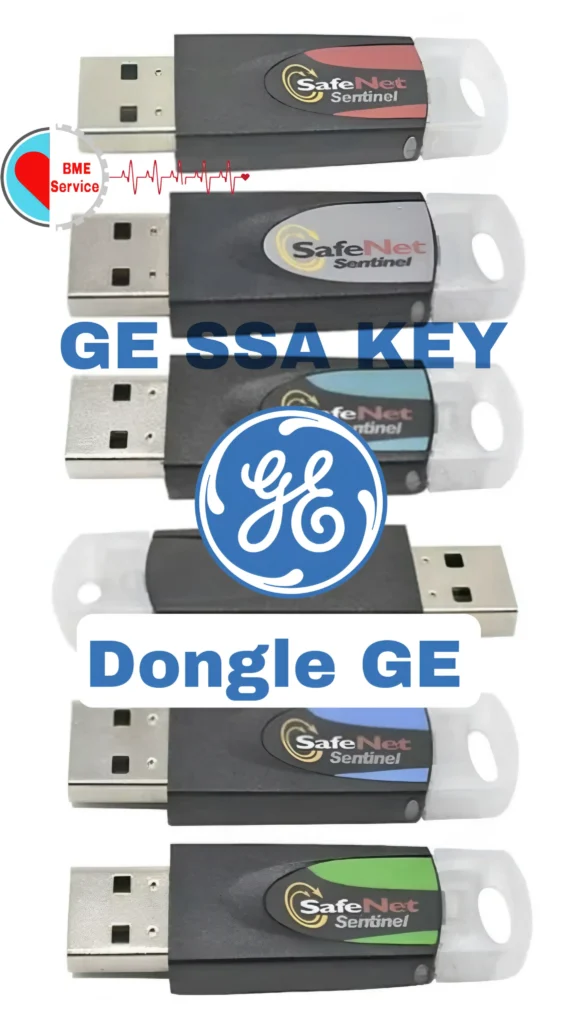
SSA License Generator — Pre-Activation Checklist & Workflow Matrix
A) Pre-Activation Checklist (Engineers-Only)
| Item | Description | Why It Matters |
|---|---|---|
| System Report | Fresh OS build, software version, and hardware ID. | Prevents mismatch errors and avoids OEM ticket pauses. |
| Entitlement/Contract ID | Active entitlement linked to the correct site. | OEM will not issue licenses without valid entitlement. |
| Site Legal Name & Address | Must match entitlement and system records. | Ensures legal traceability and avoids compliance flags. |
| Engineer of Record | Full name, role, contact information. | Verifies eligibility for engineers-only access. |
| Serial Numbers | System, workstation, or dongle serials (as applicable). | Required for OEM validation and correct license mapping. |
| Network Readiness | Wired LAN, VPN, firewall whitelisting for OEM domains. | Reduces activation failures and communication delays. |
| AV/EDR Exceptions | Allow-rules for SSA license manager paths. | Prevents quarantine or blocking of license files. |
| License Model Selection | Node-locked vs floating; seat count if applicable. | Determines cost, server needs, and activation method. |
B) Activation Workflow Matrix
| Step | Action | OEM Requirement | Engineer Responsibility | Common Mistake to Avoid |
|---|---|---|---|---|
| 1. Documentation Prep | Gather system + entitlement data. | Accurate site + serial validation. | Create a unified activation packet. | Using outdated system reports. |
| 2. Portal Ticket Submission | Submit RFQ/activation request via OEM portal. | Ticket must include entitlement + system snapshot. | Fill all fields & attach documents. | Sending requests via generic email. |
| 3. Entitlement Validation | OEM verifies contract + site authorization. | Active entitlement required. | Provide missing documents quickly. | Waiting days to respond to OEM inquiries. |
| 4. License Issuance | OEM sends key, dongle update, or activates remotely. | Must match site + hardware. | Install correctly, follow OEM steps. | Installing floating licenses on workstations. |
| 5. Post-Activation QA | Validate DICOM, connectivity, concurrency (floating). | Audit trail consistency. | Run quick workflow tests. | Skipping QA and discovering issues during clinical hours. |
| 6. Documentation Archive | Store ticket ID, logs, keys, and version matrix. | Regulatory traceability. | Add to CMMS/service library. | Losing license files or ticket history. |
Security, IT Environment & Integration Considerations
A successful activation of the SSA license generator depends on more than entitlement and engineering workflow—it requires a stable, secure, and fully prepared IT environment. Network stability, endpoint protection, workstation configuration, and system integrations all influence whether activation succeeds on the first attempt or fails with cryptic errors. This section explains the essential security and IT considerations engineers must address to ensure smooth, compliant SSA licensing with minimal downtime.
Network Security & Connectivity (VPN, Whitelisting, Firewall Rules)
A wired and stable network connection is essential during SSA activation. OEM validation often involves secure communication between the workstation and licensing servers. Using a VPN, whitelisting OEM domains, and ensuring proper DNS resolution reduces packet loss and connection interruptions that commonly cause activation failures. Engineers should always test connectivity and firewall rules before opening the activation window.
A real example: an imaging center spent nearly two days troubleshooting activation timeouts, assuming the issue was with entitlement. The real cause was a deep-inspection firewall blocking OEM certificate handshakes. After adding precise allow-rules for OEM endpoints, activation succeeded instantly. This case highlights how network security—if misconfigured—can disrupt an otherwise perfect request.
Endpoint Hardening & OS Requirements (Windows 10/11, Drivers, AV/EDR)
The SSA license generator relies on a clean, supported OS environment—typically Windows 10 or Windows 11, depending on OEM guidelines. Workstations should have validated GPU and NIC drivers, current security patches, and consistent system time settings. Misaligned OS builds can break license binding and invalidate activation attempts. Engineers should verify workstation configuration before sending an RFQ or opening a support ticket.
Antivirus or endpoint detection systems (AV/EDR) frequently interfere with license managers by blocking processes, quarantining files, or halting services. One hospital repeatedly failed floating-license activation because their EDR silently quarantined the license manager executable. After security teams added folder exclusions and allowed signature paths, activation succeeded on the first retry—saving hours of unnecessary troubleshooting.
License Server Requirements (Floating/Concurrent Licenses)
For floating SSA licenses, the license server becomes a mission-critical component. It must have a stable static IP, synchronized NTP time, and properly configured DNS. License manager services should autostart with the system, and logs should be retained for at least 30–90 days depending on local policies. Poorly maintained license servers are one of the most common causes of concurrency failures and engineer lockouts.
A teaching hospital saw intermittent license “seat not available” issues even when no engineers were logged in. The root cause? A drifting system clock on the license server caused token expiration mismatches. Once NTP sync was enforced and monitored, concurrency stabilized across all workstations—eliminating inconsistent license checkouts that previously disrupted service operations.
Integration Checks (DICOM, PACS, HL7/FHIR)
Post-activation, engineers must validate the SSA licensing environment against critical system integrations such as DICOM, PACS, and (where applicable) HL7 or FHIR-based workflows. Licensing errors sometimes appear as system integration failures—especially when workstation identity or AE Titles change after activation. Ensuring all endpoints and routing paths remain correct helps avoid misdiagnosed issues.
A radiology department once believed their SSA license was defective because image transfer stopped working immediately after activation. The real problem was that their PACS routing table still referenced the old workstation ID. Updating AE Titles restored full functionality. This example underscores why integration checks are an essential part of the activation workflow—not an optional step.
Security Logging, Audit Trails & Compliance
SSA license activation creates important audit artifacts: activation timestamps, ticket IDs, version matrices, and environment logs. Capturing these records provides traceability for regulatory bodies and internal IT security audits. Audit readiness is especially important in medical environments where system integrity directly affects patient care and legal compliance.
One multi-site imaging network avoided a major compliance audit issue by maintaining a centralized repository of all SSA licensing events. When asked to provide evidence of license legitimacy during a regulatory review, they produced a complete history—entitlement snapshots, activation logs, server-status reports—within minutes. The reviewers praised the clarity and completeness of their documentation, and the audit segment closed immediately.
People Also Ask (FAQs)
Engineers searching to buy SSA license generator often share the same concerns: who is allowed to use it, how to buy it safely, what documentation is needed, and how long activation really takes. This FAQ section answers those questions in practical, compliance-focused language. Each answer explains not only what to do, but why OEMs require certain steps—and how well-prepared teams avoid delays, downtime, and audit problems.
1. Is the SSA license generator available to the public?
The short answer is no. The SSA license generator is restricted to qualified service or biomedical engineers working under valid contracts. OEMs classify it as a professional, regulated tool because it influences how medical systems are configured and licensed. Public access would create unacceptable risks for patient safety, cybersecurity, and regulatory integrity, so eligibility is tightly controlled through role verification and entitlement checks.
In real deployments, this typically means the OEM or authorized distributor checks your job title, employer, and sometimes training or certification status before progressing an RFQ or activation request. One hospital formalized this by naming a small list of “engineers of record” for each modality. Once those names were on file, SSA-related requests flowed much faster, because eligibility questions were already resolved.
2. How do I buy SSA license generator through authorized channels?
To buy SSA license generator in a compliant way, you must go through OEM-approved channels: either the official support/partner portal or a recognized authorized distributor. You submit an RFQ (request for quote) that includes site details, system information, and your entitlement reference. The OEM then generates a quote mapped to your contract and installed base, protecting both legal and technical alignment.
One engineering team used to send informal emails like “We need SSA license” without any structured data. Quotes took days, and follow-up questions were constant. After switching to a portal-based RFQ with required fields and attachments, quote turnaround dropped below 24–48 hours. OEM staff could instantly see what was installed, which contracts were active, and which SSA options were requested—eliminating most of the “back-and-forth.”
3. What documentation is required to buy and activate the SSA license generator?
OEMs generally require three documentation pillars: who, where, and what. “Who” is the engineer of record and organization; “where” is the entitled site (legal name, address); “what” is the system identity and contract/entitlement ID. A current system report, serial numbers, OS build, and an entitlement or contract number are almost always mandatory for SSA-related licensing activity.
A biomedical team once submitted an activation request with only an email signature and a vague reference to “our MRI system.” The OEM had to pause and ask for serials, site name, and contract proof, adding days of delay. After that, the team built a simple “SSA packet” template containing all key data. Future requests moved quickly, often completing within a single maintenance window.
4. Can SSA licenses be transferred between systems or sites?
License transfer rules depend on the OEM, license type, and entitlement terms. In many cases, node-locked licenses are bound to a single workstation or hardware ID and cannot be moved freely. Any relocation, system replacement, or re-hosting must go back through the OEM for approval and re-issuance. Floating or concurrent licenses may allow more flexibility, but still within the constraints of entitlement and defined sites.
One region tried to “informally” reuse a node-locked SSA context on a new service laptop after decommissioning the old one. Activation failed, and when the OEM reviewed logs, they flagged the attempt as outside policy. The issue was resolved only after a formal transfer request and entitlement update. Since then, that team has treated license moves as controlled change events, not ad-hoc decisions.
5. How long does SSA license activation usually take?
In a clean scenario—correct documentation, active entitlement, supported OS build, and a ready network—SSA activation can often be completed within 24–48 hours from the moment the OEM receives your complete ticket. If entitlement is expired, data is incomplete, or the IT environment blocks license traffic, the process can stretch to several days or more.
One site repeatedly experienced week-long delays because they opened tickets with missing entitlement IDs and old system reports. After they introduced a pre-activation checklist and coordinated with IT to test VPN and firewall rules in advance, their average activation time dropped dramatically. In most cases, the difference between a 48-hour and a 7-day activation is not the OEM’s speed—it’s how prepared the engineering and IT teams are.
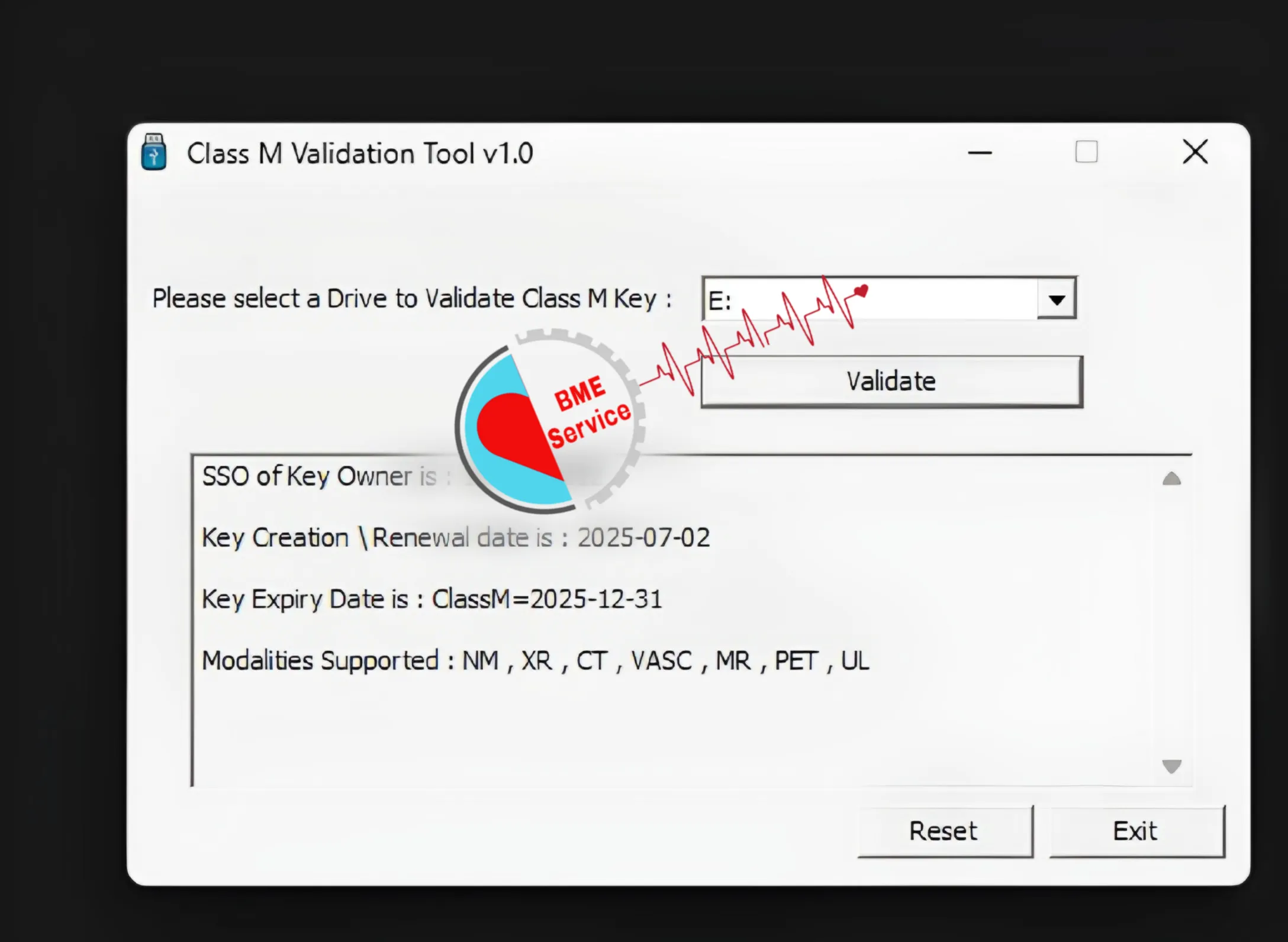
Regulatory & Legal Notice
Because the SSA license generator interacts directly with regulated medical systems, its use is governed by strict legal, cybersecurity, and medical-device compliance frameworks. OEMs enforce controlled access, entitlement validation, and audit-ready documentation to protect patient safety and intellectual property. This section explains why these controls exist, how they reduce organizational risk, and why adhering to them ensures long-term operational stability for hospitals, service teams, and biomedical departments.
Medical-Device Regulations & Patient Safety
Medical imaging platforms are regulated devices, and their licensing frameworks are part of the same safety ecosystem. An SSA license generator must therefore operate on validated OS builds, approved system configurations, and correct entitlement records. These constraints prevent improper configuration of medical systems, which could otherwise impact device performance, workflow stability, or regulatory status.
A women’s imaging center passed an unexpected compliance audit because its SSA activation packet was fully aligned: entitlement snapshot → OEM portal ticket → activation logs → post-activation QA. Inspectors saw a clean chain of custody with no ambiguity about how licensed features were added. Their preparation turned what could have been a stressful audit segment into a quick approval.
OEM Licensing & Intellectual Property Protection
License generators contain proprietary OEM mechanisms for issuing service keys, validating contracts, and binding licenses to hardware. Unauthorized distribution, circumvention, or modification is not only prohibited—it also breaks the legal chain that ensures the system is operating under approved conditions. Using OEM-authorized channels preserves this integrity and protects a site’s right to future support.
One facility attempted to “reuse” SSA license files across multiple workstations without involving the OEM. The system logs revealed the mismatch, and support was temporarily suspended until the licensing environment was corrected. Once they reverted to authorized procedures, support was restored—but the event reinforced that licensing actions must always follow documented OEM pathways.
Cybersecurity, Network Controls & Audit Trails
Modern SSA licensing frameworks rely on secure communication, digital signatures, and verifiable logs. These elements create a defensible audit trail, allowing security teams to trace who performed activation, when it occurred, and under which entitlement. Proper logging also accelerates incident response by identifying misconfigurations, blocked ports, or unauthorized attempts quickly and accurately.
A large regional imaging network integrated SSA licensing logs into its SIEM platform. When a firewall update accidentally blocked the license-manager port, the SIEM flagged the issue within minutes. Engineers resolved the problem before clinicians even noticed symptoms. By combining SSA logs with broader security tools, the network improved both uptime and IT–clinical coordination.
Legal Liability & Organizational Risk Management
Unauthorized licensing activity—whether intentional or accidental—can trigger contract violations, regulatory findings, or legal exposure during audits. Conversely, using authorized channels with clear documentation builds a strong compliance position. Every approved activation reinforces traceability: which engineer requested it, under which entitlement, and how it was validated.
A hospital that once treated SSA licensing casually later faced a regulatory inquiry. Fortunately, their engineering team had stored all SSA activation packets in a centralized repository. They produced ticket IDs, entitlement proofs, version matrices, and change-control approvals within minutes. This rapid evidence delivery prevented what could have evolved into a serious compliance issue.
Regional Frameworks & Cross-Border Compliance
Regulations differ across regions—US (Quality System Regulation), EU (MDR), Gulf countries (Ministry of Health approvals)—but the underlying principles are the same: authorized procurement, verified entitlement, secure activation, and documented change control. Cross-border deployments must adhere to both OEM policies and local compliance requirements to avoid licensing conflicts.
A multinational health network adopted a unified SSA playbook with global standards (engineers-only, entitlement checks, activation packets). Each region then added a local compliance addendum. This hybrid model ensured global consistency while still meeting regional regulatory needs—a major advantage during audits and cross-site migrations.
Best Practices for Long-Term Compliance
Maintaining compliance is an ongoing responsibility. Keeping entitlement active, updating system inventories, securing license servers, and archiving activation packets are all essential to smooth operations. Quarterly internal reviews—similar to IT “tabletop exercises”—help ensure engineers remain familiar with procedures and that documentation is always up to date.
One facility schedules an internal SSA audit every 6 months. They verify entitlement status, review license logs, test floating-license concurrency, and ensure their activation packets are complete. This routine allows them to anticipate OEM tickets, support renewals proactively, and avoid last-minute emergencies that could disrupt clinical schedules.
Call to Action — Request an Authorized Quote
After understanding eligibility, pricing, entitlement, security, and compliance, the final step is taking practical action. If your goal is to buy SSA license generator through OEM-authorized channels, a structured and well-prepared request will significantly shorten response times and reduce activation delays. This section explains how to request a compliant quote, how to prepare your site documentation, and how to move confidently from evaluation to activation without interruptions to clinical operations.
Request an Authorized Quote (Engineers-Only)
The fastest path to purchasing the SSA license generator is submitting a complete RFQ through an OEM-approved distributor or the official support portal. Your RFQ should include system serials, entitlement/contract ID, site name, expected license type (node-locked or floating), and SLA requirements. Structured requests help OEM teams match your order to validated entitlement records and prevent misalignment during activation.
A regional imaging network reduced their quote turnaround from five days to just under 48 hours after switching to a standardized RFQ packet. By attaching entitlement snapshots and updated system profiles each time, the OEM team had everything necessary to approve the request immediately—resulting in smoother scheduling and faster installation windows.
Share Your Entitlement Snapshot & System Details
OEMs cannot issue SSA licenses without verifying entitlement. Providing a current entitlement number, contract history, site legal name, and workstation/system details ensures your request is processed correctly on the first attempt. Engineers should also include a fresh system report to confirm OS version, hardware ID, and version alignment.
One biomedical department struggled with repeated activation delays because of missing or outdated entitlement records. When they created a shared “SSA entitlement dashboard” that tracked renewal dates, contract numbers, and system IDs, their support interactions became seamless. Renewals were planned ahead of time, activations were predictable, and no critical service windows were missed.
Book a Secure Activation Window
After receiving your quote and OEM approval, coordinate with IT to schedule a secure activation window. This includes preparing a wired network path, confirming VPN access, verifying firewall allow-rules for OEM endpoints, and ensuring that AV/EDR tools will not quarantine license files. If deploying a floating license, ensure that the license server has a static IP, working NTP sync, and stable uptime.
In one hospital, activation repeatedly failed until IT discovered that the firewall was intermittently blocking outbound traffic from the license manager. After creating dedicated rules and monitoring, activation succeeded within minutes. Having IT prepared—and involved early—can prevent hours of unnecessary troubleshooting.
Run Post-Activation QA & Confirm System Stability
A proper post-activation QA ensures that the SSA license generator is functioning correctly and that the system remains fully operational. Engineers should validate key areas such as DICOM send/receive, connectivity to PACS, workstation identity (AE Titles), concurrency (if floating), and log integrity. Document all results and archive them in your CMMS or internal engineering library.
A clinical engineering team once avoided a morning operational outage by performing a quick 5-minute QA routine after activation. The test revealed a minor DICOM routing mismatch caused by a workstation rename during license installation. Correcting it ahead of time prevented hours of workflow disruption and ensured a perfect clinical start to the day.
Talk to an Authorized Specialist (Direct Contact)
Engineers and procurement teams ready to proceed can request a compliant quote or entitlement verification using the contact details below. Provide your RFQ packet, site information, and targeted activation window for faster processing.
📞 +967775455559
💬 https://wa.me/message/NRDFVKNYDTUNM1
Also read about information on Buy Medical Device License – For Ultrasound, CT & MRI , click here. (https://bmeser.com/medical-device-license/)

